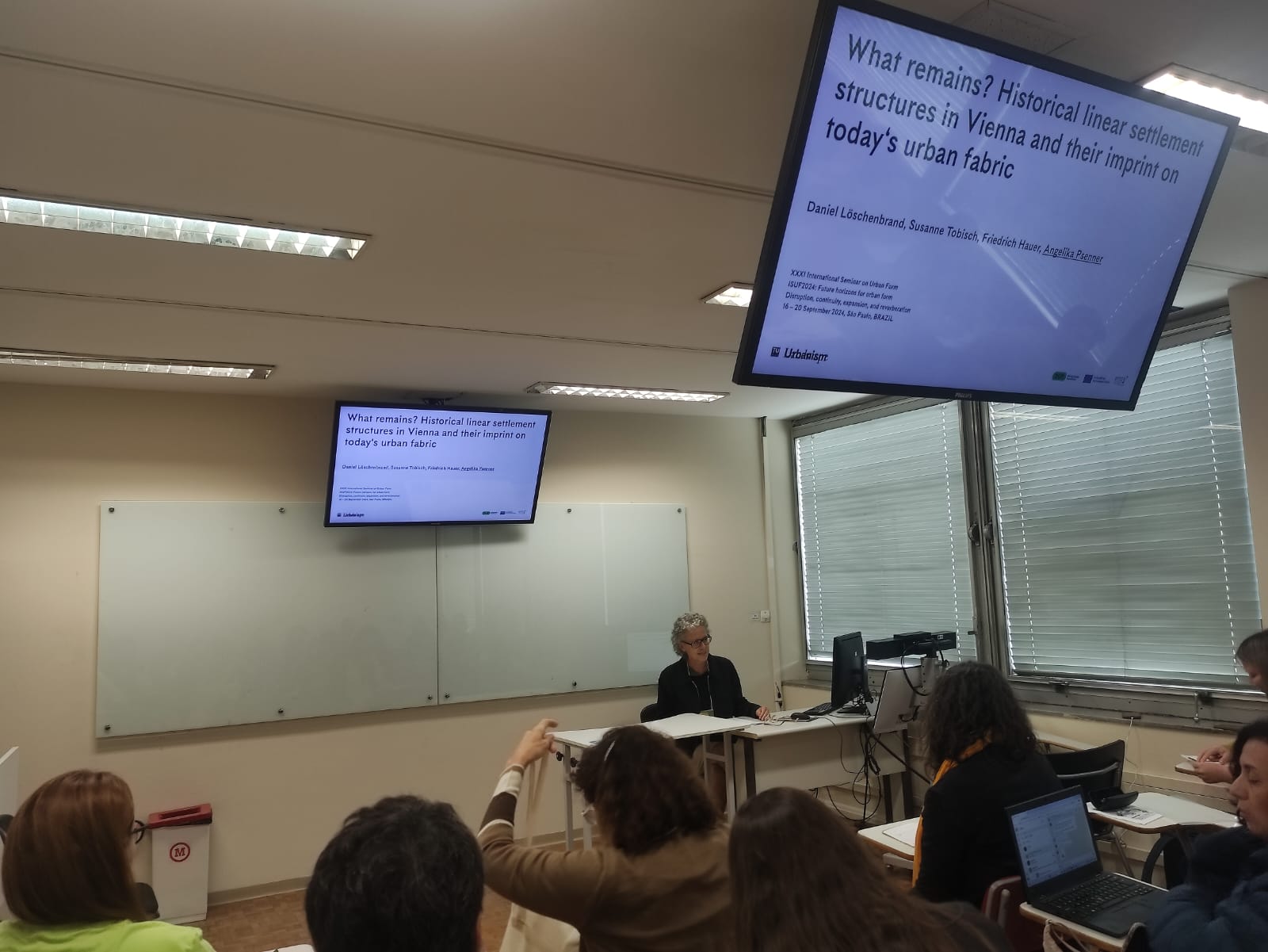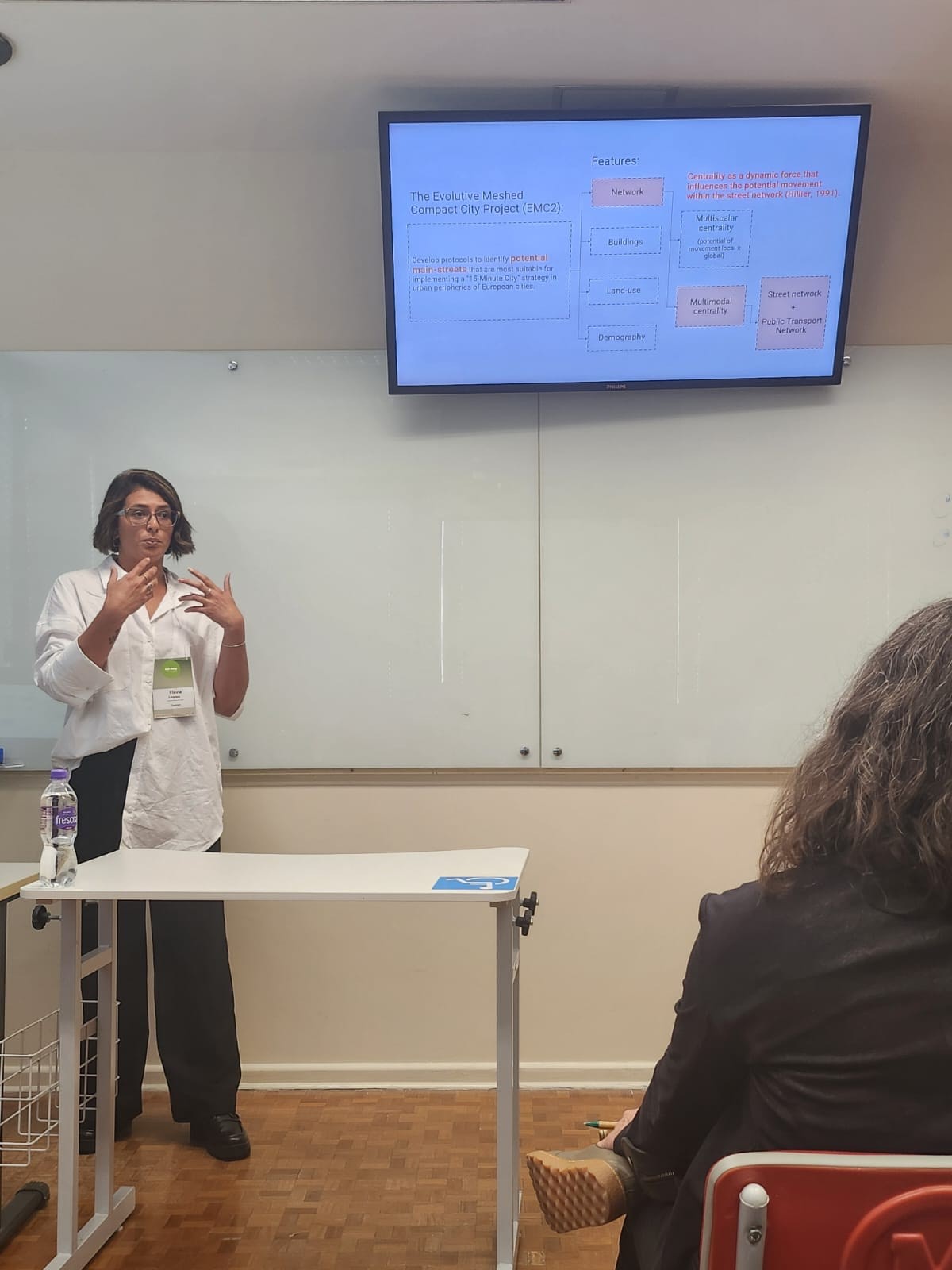Members of the EMC2 Consortium, including Meta Berghauser Pont, Angelika Psenner, Alessandro Araldi, and Flavia Lopez, participated in ISUF2024, the leading global conference on urban form, held in São Paulo. They presented their latest research, showcasing groundbreaking advancements in the study of urban morphology.
Here are the contributions of our different members of the EMC2 Consortium to ISUF2024, held in São Paulo. Feel free to reach out to us with any questions about these latest developments!
Flavia Lopes presented a model integrating street and public transport networks to assess the multimodal centrality of streets. By determining multimodal centralities, we can identify streets that are more connected to the city, indicating potential for local and global movement. This approach provides valuable insight into strategic locations for implementing the concept of the 15mC, thereby contributing to the promotion of vibrant, healthy, liveable, and sustainable urban environments. The study is part of the emc2 project. Visit the SMoG:s project page if you want to read more.
The authors of the corresponding paper are: Flavia Lopez, Meta Berghauser Pont, Jeorge Gil, Ioanna Stravoulaki
Angelika Psenner presented the current status of the study on the 15mC-potential for the future spatial development of Vienna’s peripheral zone. From an urban morphological perspective, it is obvious that in order to anticipate future developments it is necessary to know the history and evolution of urban structures in detail. Therefore, an in-depth knowledge of the morphogenetic processes and the spatial development of these zones is required.
Our study illustrates how historical village-structures have changed over centuries; the focus here is on recognising the real potential for their further development. Although these settlements are of great importance for the historical urban evolution of the city, they have not yet been analysed in their typological synthesis. However, it is crucial to have a fundamental understanding of their forms and functions, and how they have been incorporated into the urban texture; especially in the context of ever-growing cities, that are expanding beyond their historical borders and continuing to absorb rural structures into their fabric. These findings will ultimately help determine a course of action for the discussed neighbourhoods’ structural and functional activation as well as their climate-friendly adaption.
The authors of the corresponding paper are: Daniel Loeschenbrand, Susanne Tobisch, Friedrich Hauer and Angelika Psenner.
Alessandro Araldi presented the latest advancements in Urban Visibility Analysis and the integration of street-level protocols into the Momepy Python library, in collaboration with Martin Fleischmann (Charles University, Prague). In previous works, Araldi and Fusco (2019 ; 2024) introduced specific protocols for skeletal streetscape analysis, using raycasting along streets to capture morphometric characteristics, bridging urban design with urban morphology. At ISUF2024 Alessandro presented their most recent developments and their integration into the Momepy Python library (Fleischmann, 2019). This integration facilitates urban form studies at various scales, including visibility analysis of urban form features from a pedestrian’s perspective in public spaces. The integration will provide significant benefits to urban morphologists, designers, environmental psychologists, and city science researchers by enhancing the understanding of urban spaces from the street perspective. The street-based morphometric descriptors will be employed within the emc2 project to analyze the morphometric properties of streetscapes in a comparativce study of five metropolitan regions across Europe. In the coming weeks, the new street-base functions of Momepy library will be available—stay tuned!
The authors of the corresponding paper are: Alessandro Araldi, Martin Fleischmann, Giovanni Fusco.



